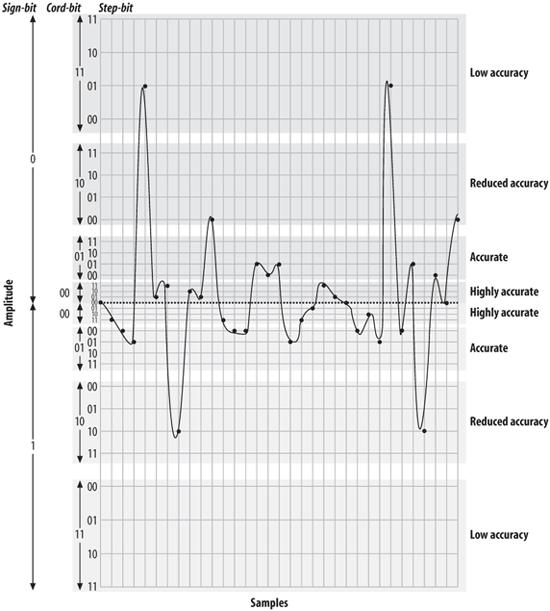The Digital Circuit-Switched Telephone Network
For over a hundred years, telephone networks were exclusively circuit-switched. What this meant was that for every telephone call made, a dedicated connection was established between the two endpoints, with a fixed amount of bandwidth allocated to that circuit. Creating such a network was costly, and where distance was concerned, using that network was costly as well. Although we are all predicting the end of the circuit-switched network, many people still use it every day, and it really does work rather well.

Figure 7-12. Quantized and companded at 5-bit resolution
Circuit Types
In the PSTN, there are many different sizes of circuits serving the various needs of the network. Between the central office and a subscriber, one or more analog circuits , or a few dozen channels delivered over a digital circuit, generally suffice. Between PSTN offices (and with larger customers), fiber-optic circuits are generally used.
The humble DS-0, the foundation of it all
Since the standard method of digitizing a telephone call is to record an 8-bit sample 8,000 times per second, we can see that a PCM-encoded telephone circuit will need a bandwidth of 64,000 bps. This 64-kbps channel is referred to as a DS-0 (that’s Dee-Ess-Zero). The DS-0 is the fundamental building block of all digital telecommunications circuits.
Even the ubiquitous analog circuit is sampled ...
Get Asterisk: The Future of Telephony now with the O’Reilly learning platform.
O’Reilly members experience books, live events, courses curated by job role, and more from O’Reilly and nearly 200 top publishers.

